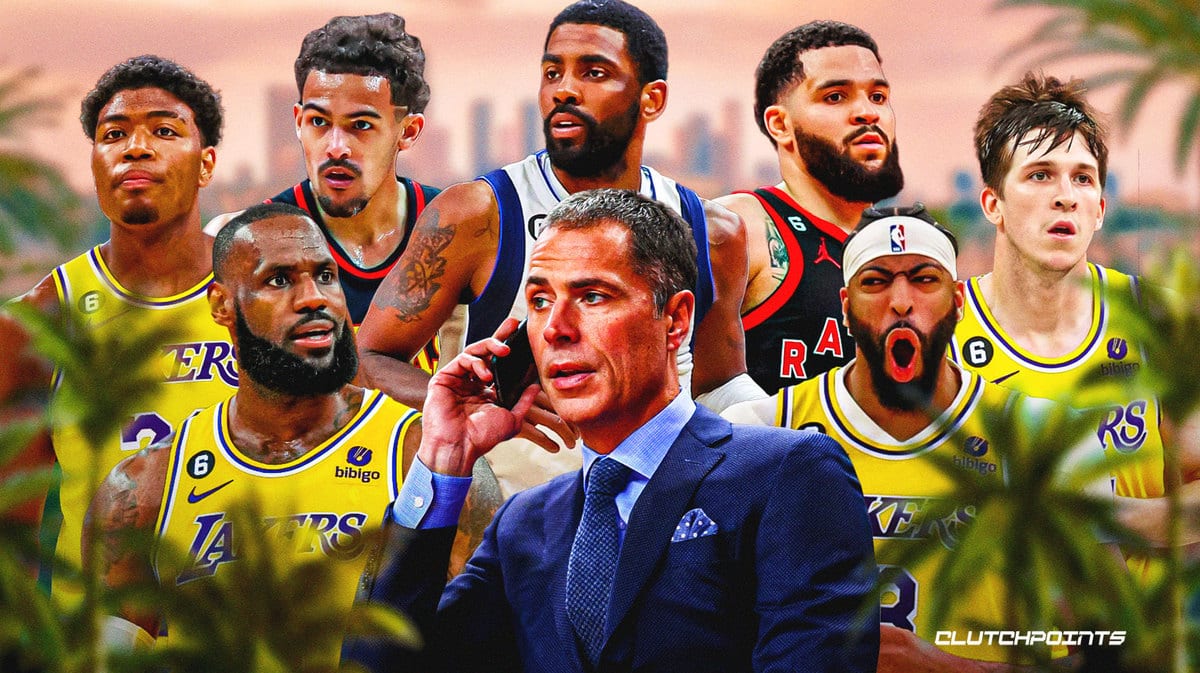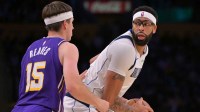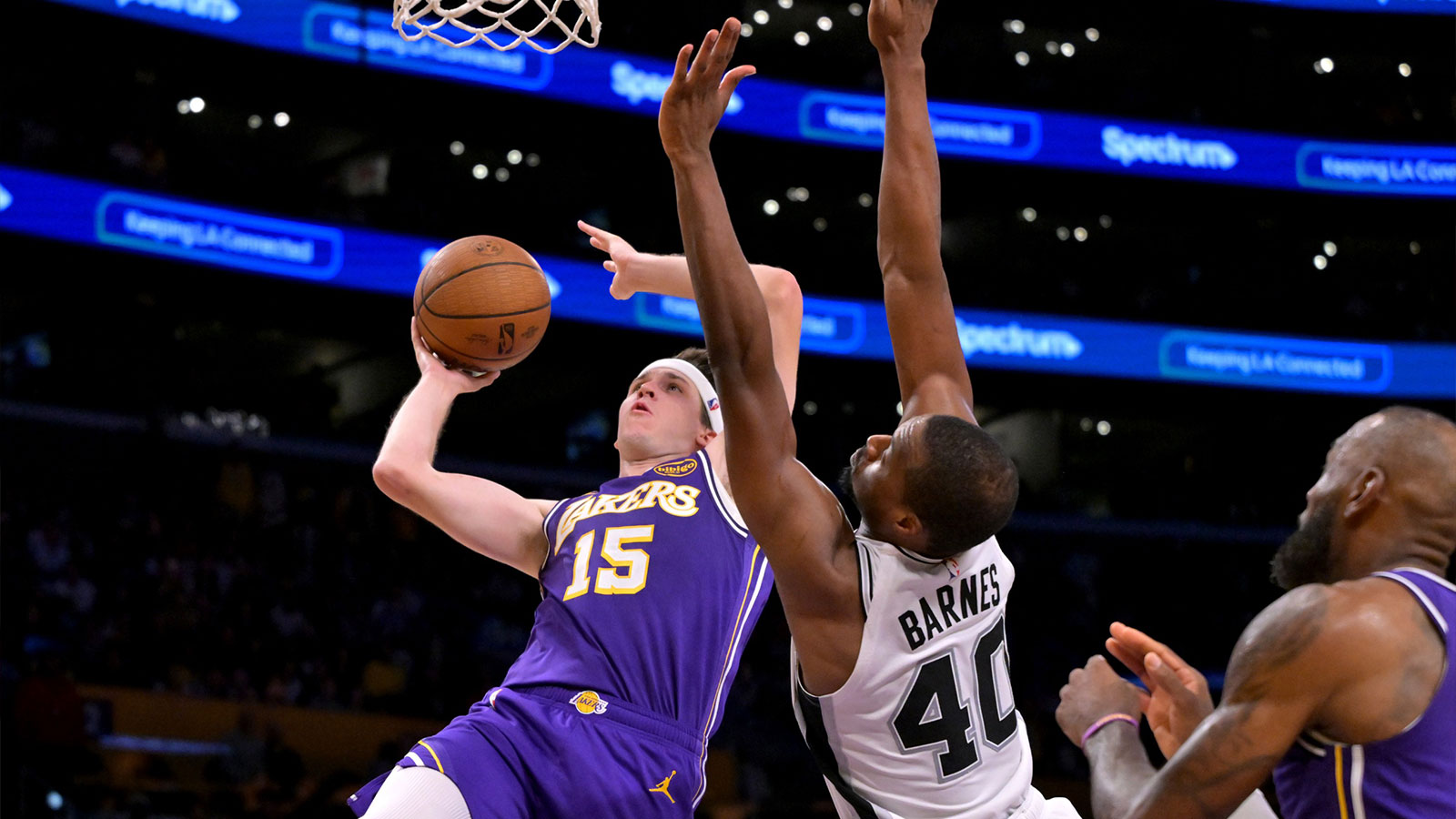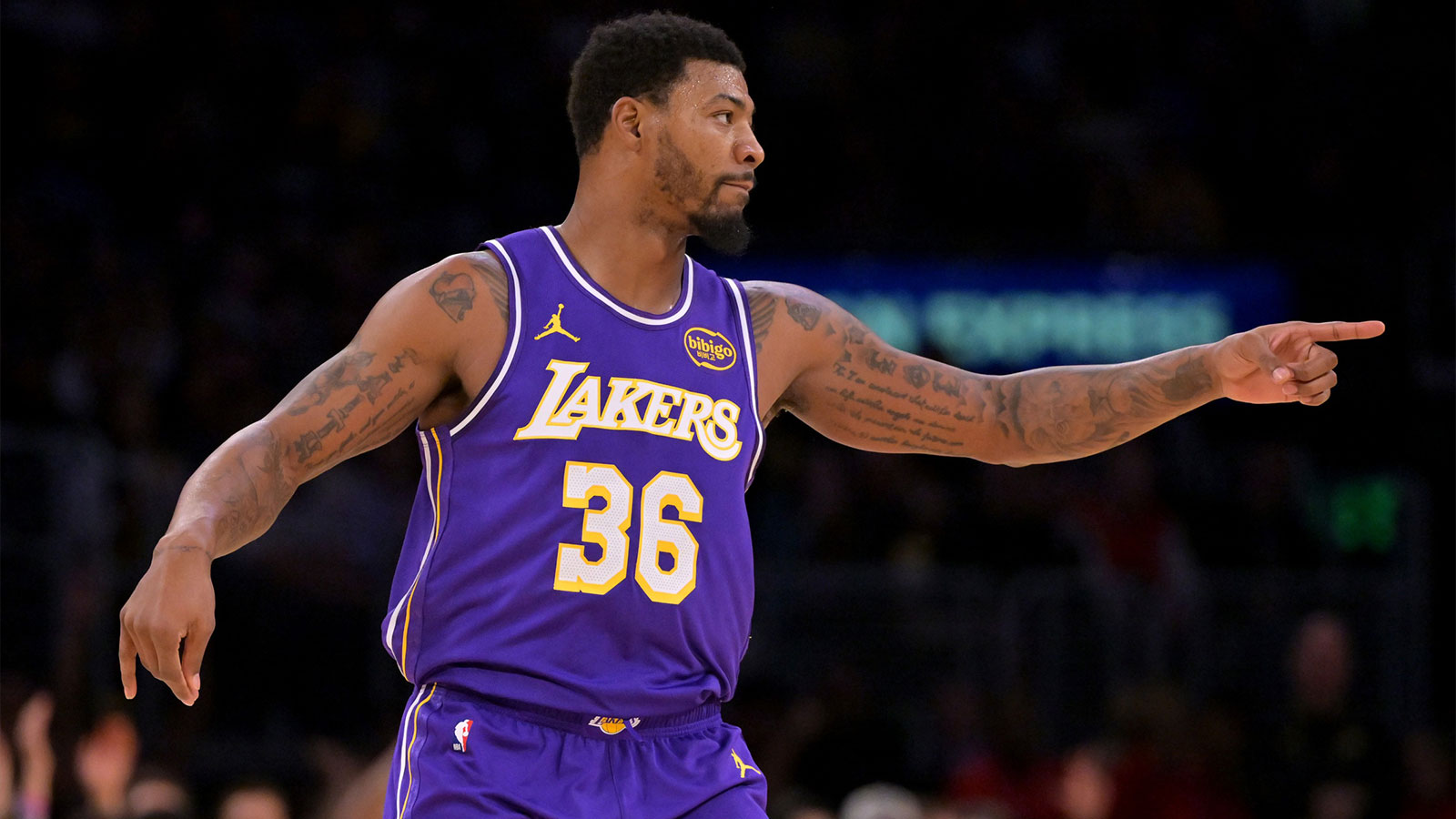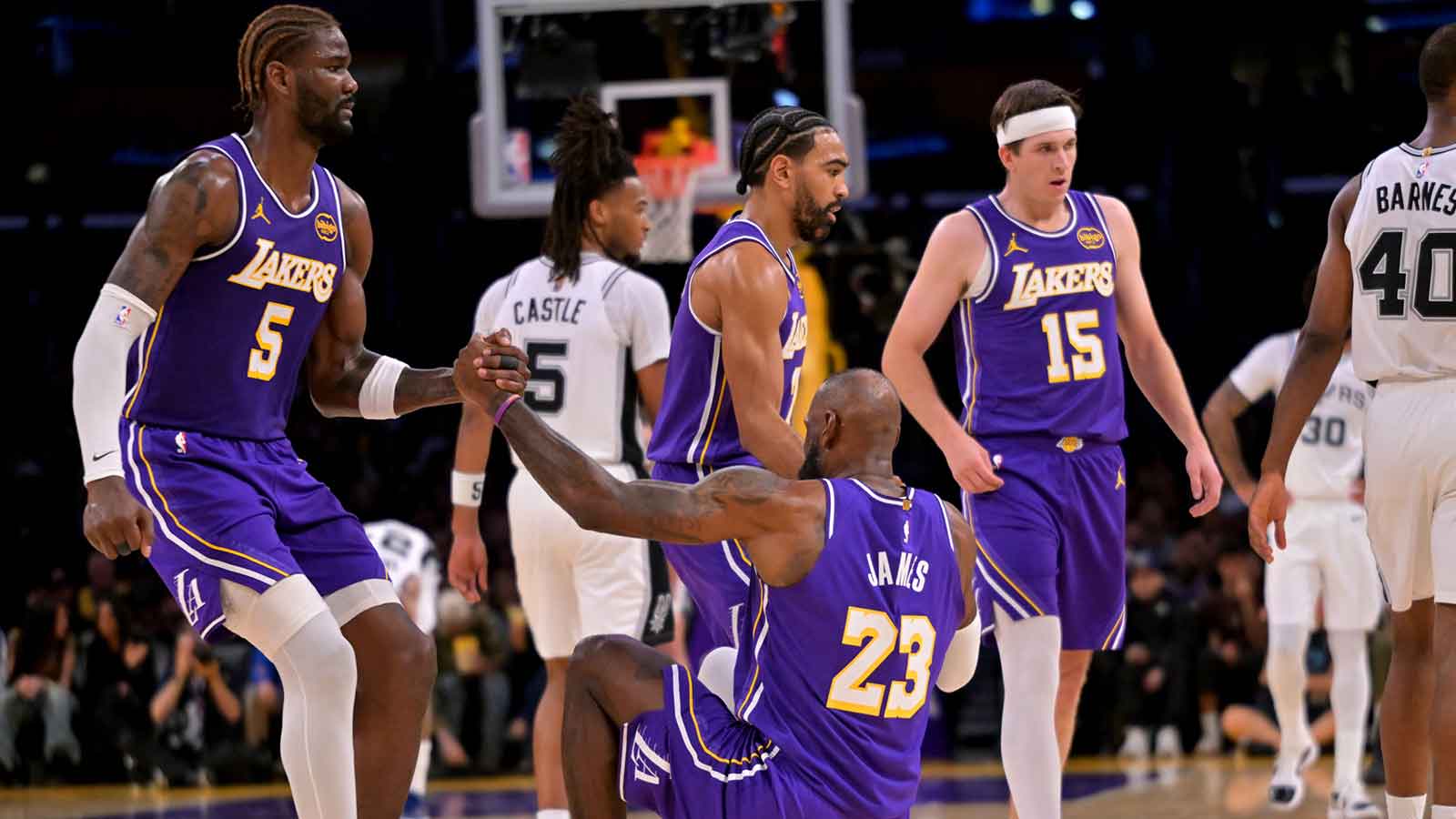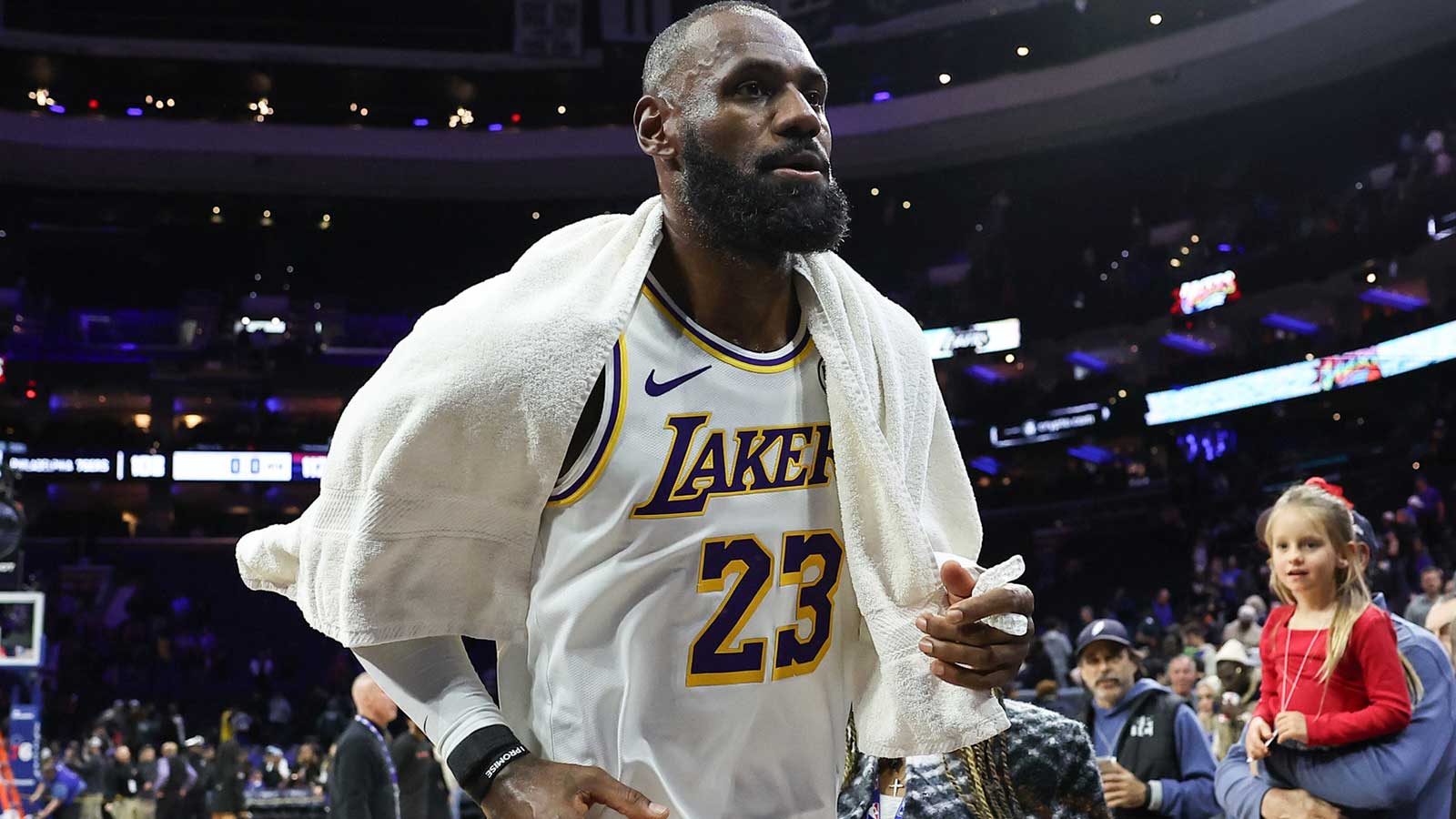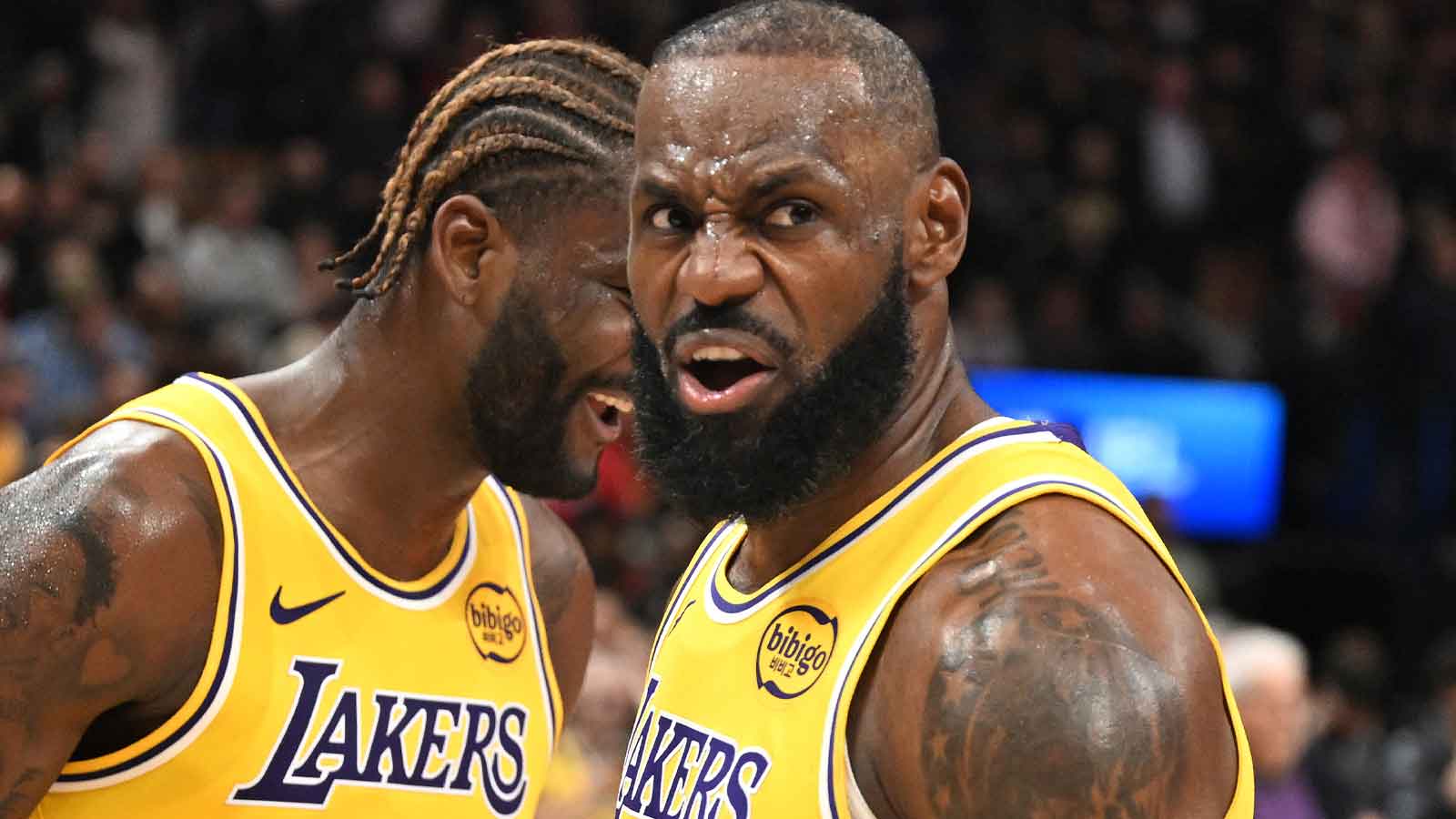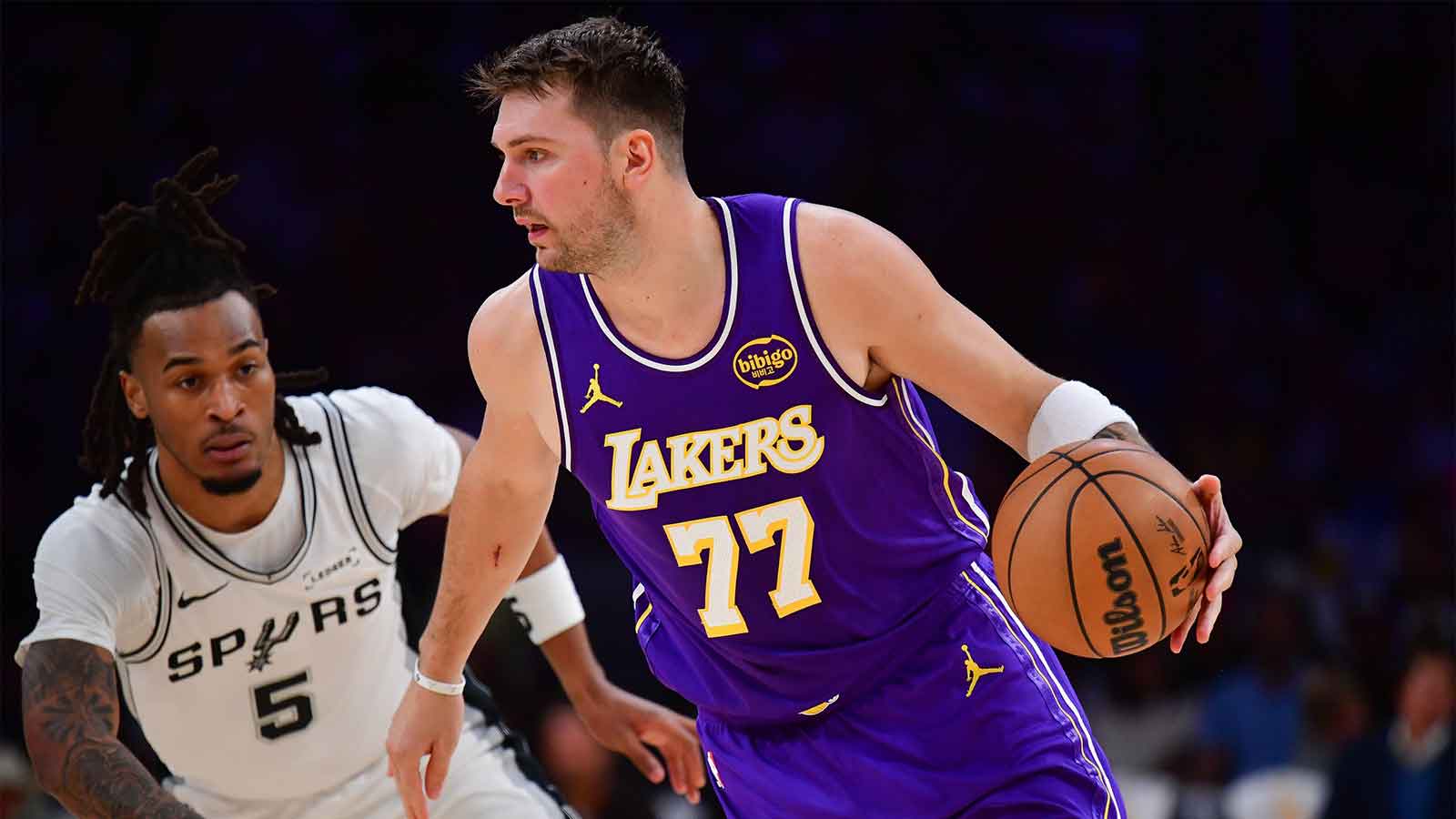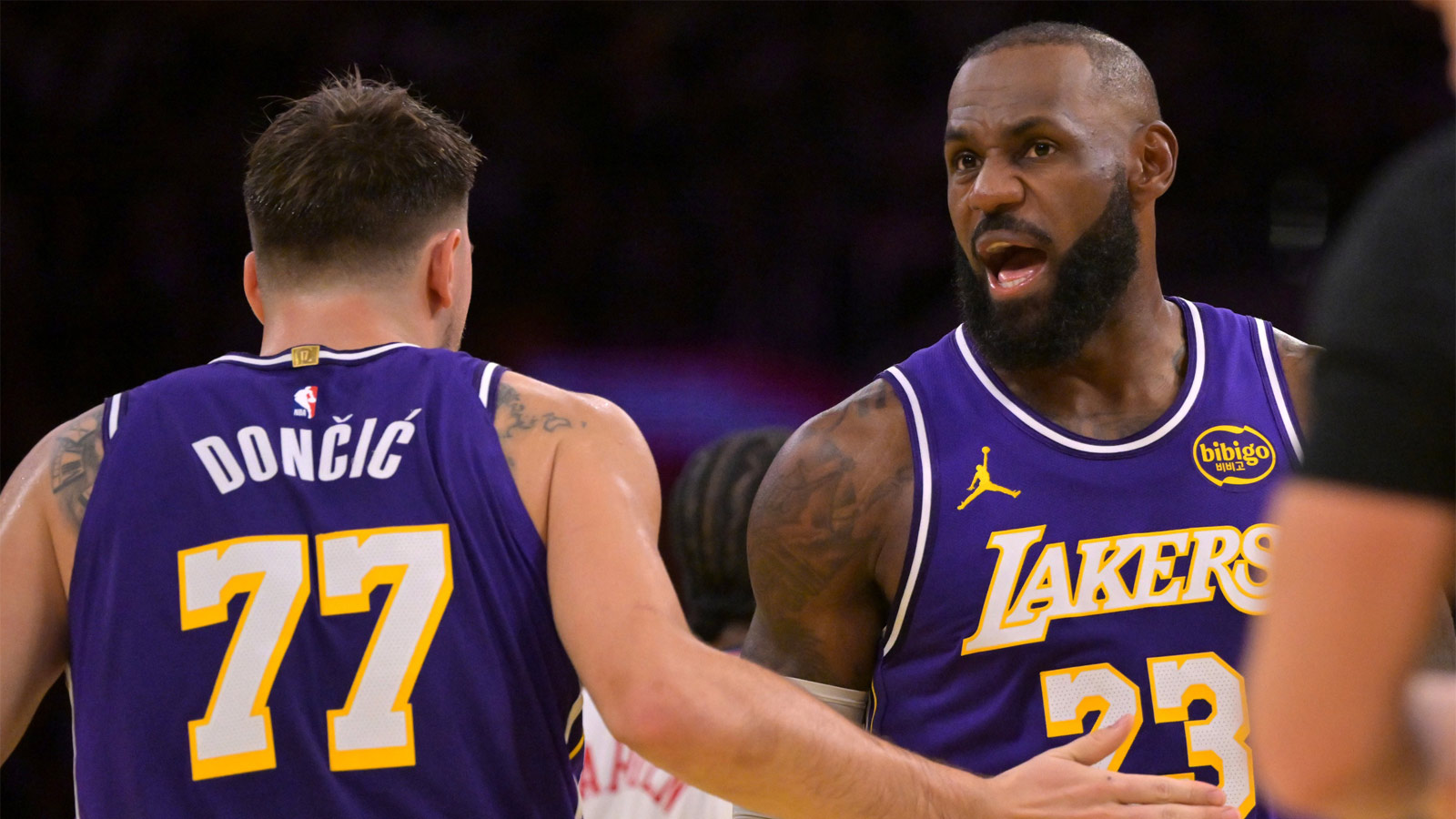Even though LeBron James and the Los Angeles Lakers perpetually strive for championships and got swept in the conference finals, their 2022-23 season was an undeniable success.
Darvin Ham proved to be a home run hire. Austin Reaves turned into a borderline star. They re-established an identity premised on defense, chemistry, and intangibles. They went from 2-10 to within eight wins of raising an 18th banner and added potentially useful future assets in the process. From the trade deadline until running into a Denver Nuggets typhoon, the Lakers won 27 of 40 games — a 55-win pace — and boasted the best defense in the NBA.
The Lakers are faced with three approaches this summer: Run it back, go star-chasing and overhaul the roster, or do a little of both.
Now that we’ve had a few days to decompress after the season finale and exit interviews, here are the five most important questions heading into the latest pivotal summer for the Lakers.
5. Will LeBron return?
LeBron’s choice to float retirement following Game 4 could have been a leverage play, an attention-grabbing move, a playful cliffhanger to mess with the media, or a genuine sentiment from a 38-year-old with a torn foot at the conclusion of a taxing campaign.
At exit interviews, Pelinka and Ham expressed hope that LeBron would return. Dennis Schroder said he “can't see it.” Tristan Thompson laughed at the idea.
Tristan Thompson laughed when asked about LeBron pondering retirement. “That man’s one of the biggest competitors I know.” pic.twitter.com/8gtQfdBUfI
— Michael Corvo (@michaelcorvo_) May 23, 2023
We already have more clarity on LeBron’s status. ESPN's Dave McMenamin reported that LeBron is expected to play in 2023-24 — the first year of a two-year, $97 million extension. The Athletic's Shams Charania reported that LeBron may need foot surgery that will sideline him for two months but should be ready for training camp (alas, no Drew League, it would seem).
4. What is the Lakers' cap situation?
LeBron and Anthony Davis deflected questions about next year after Game 4, noting that the franchise only has three players under contract: themselves and 20-year-old Max Christie.
The Lakers reportedly intend to guarantee Jarred Vanderbilt’s salary before June 30. They have the No. 17 and No. 47 picks in the 2023 NBA Draft.
LeBron ($46.9 million), AD ($40.6 million), Vando ($4.7 million), Christie ($1.7 million), the No. 17 pick ($3.6 million), plus cap holds for Rui Hachimura ($7.7 million), Lonnie Walker IV ($7.7 million) and Reaves ($2.2 million) and others minimum cap holds brings their cap sheet to about $120 million.
The projected salary cap for 2023-24 is $134 million. If the Lakers pick up Malik Beasley's $16.9 million team option and Mo Bamba's $10.3 million contract (more on those in a second), they'll be above the luxury tax threshold for the third straight season, triggering repeater tax penalties.
If they end up $17.5 million over the threshold, they'll enter the “second apron”, per the Collective Bargaining Agreement. The new CBA is designed to be excessively punitive for teams in that zone. For instance, second-apron teams lose access to their mid-level exception, among (many) other limitations to transactions. The restrictions will only stiffen going forward.
If the Lakers want to go the cap-space route, they can tear down the roster and clear upwards of $35 million.
3. Who else is coming back (or not)?
Pelinka opened his exit interview presser by labeling this past season as one of “advancement and growth” and by preaching the value of continuity. Ham emphasized the “step-by-step” process of team building.
“After the trade deadline, we had one of the top records in the league. I think keeping that continuity is going to be very important,” said Pelinka. “We ultimately got knocked out by a team that has great continuity. … We know there’s more growth and improvement in that group, especially if we get a training camp together. So, I would say it’s a high priority to keep our core players together.”
Heard that before 😭😭😭😭 https://t.co/pBgwCp0HAV
— kuz (@kylekuzma) May 23, 2023
Priority No. 1 is keeping restricted free agent Austin Reaves. As a sophomore, Reaves blossomed into a reliable third-scorer and playmaker. He raised his game in the playoffs.
Pelinka was not technically authorized to discuss Reaves’ status, but he strongly signaled the Lakers' plan to re-sign the 24-year-old.
“I would say this resoundingly clear: Our intentions our to keep our young core together … We want to do our best to fit the puzzle together … Austin, in particular, had an incredible year. I think he defines what’s at the heart of playing for the Lakers. He’s a selfless, team-first guy. He lives in the gym. He loves the big moment. He’s been able to meet the big moment. I think he’s the guy that, regardless of what his deal is, it won’t change him as a person. And we’ll hang our hat on that.”
Reaves, too, stated his preference to remain in Los Angeles.
“I want to be here,” Reaves said. “It feels like home to me in a sense. Obviously, it’s a lot different than my actual home. It’s a little bigger, a lot more people, worse traffic. But I told somebody a couple of months ago that it feels like a home for me. Basically, the way the fans support me, the players coach and the staff, front office, this is definitely somewhere I want to be, but we’ll see what happens.”
Austin Reaves told me that while he's not a vocal leader like LeBron or AD, he believes his "decent basketball IQ" (lol) will allow him to "expand" his leadership skills moving forward pic.twitter.com/4eXBs1pQvU
— Michael Corvo (@michaelcorvo_) May 24, 2023
The Lakers can initially offer Reaves a four-year, $50-53 million contract (depending on where the cap lands). Another team can offer up to $98-$100 million, with about $75 million falling across the final two years. Per the Arenas rule, he is not eligible to earn more than $11.4 million in 2023-24.
If the Lakers let him go, the front office will be thought of like the Roy kids: as not serious people.
Leaking their intentions with Reaves is shrewd (I think). Yes, it could entice teams to make an exorbitant offer just to clog up the Lakers' books, knowing the Lakers will match. In actuality, though, because of Austin's minimum cap hold, The Lakers can take their sweet old time before officially inking Reaves. That hypothetical rival bidder would then have their free agency spending money tied up for days on a player they know they aren't going to sign.
Next up is Rui Hachimura, who called his three months with the Lakers the “one of the best times” of his life. The 25-year-old averaged 12.2 points on .557/.487/.882 shooting splits in the postseason and displayed stout defensive chops.
The Lakers will tender a $7.7 million qualifying offer to Hachimura before June 30, thus making him a restricted agent. In February, Pelinka described the Lakers’ trade deadline approach as “pre-agency.” Hachimura, as a potential building block, should be a manifestation of that concept.
Rui is seeking an annual salary in the ballpark of his $18.8 million cap hold figure. By all accounts, the Lakers are determined to re-sign Rui.
The to-do list gets murkier after that.
Two players the Lakers would theoretically like to keep are Dennis Schroder and Lonnie Walker IV. Schroder was a rock all season and has a deep relationship with Ham. Walker IV impressed the organization by staying ready and earning a rotation spot in the playoffs. At exit interviews, the thoughtful 24-year-old said he believed he turned a corner in his career.
The Lakers possess non-Bird rights for Walker IV and Schroder, so they can offer 120 percent of their 2022-23 salary ($7.8 million for Lonnie, $3.8 million for Dennis). If Walker IV finds a bigger offer elsewhere, the Lakers probably have to say goodbye.
It will be hard to retain Schroder, despite the need for multiple ball-handlers around LeBron and no clear-cut starting point guard on the roster. The Lakers can use the $12.2 million non-taxpayer mid-level exception and the bi-annual exception worth roughly $4.5 million, although using more than $5 million on the NTMLE and/or the BIE would hard-cap them. The full mid-level may be necessary to keep Schroder.
As Yahoo's Jake Fischer laid out, the Lakers may try to persuade Dennis to take the bi-annual, which would enable them to offer him a four-year, $58 million in 2024-25. Schroder spent the last two seasons playing for cheap, so he may not want to cede any more dollars. Tyus Jones, the other top backup PG in the league, got $14.5 million annually from the Memphis Grizzlies.
I’d personally like to see the Lakers retain Wenyen Gabriel. Gabriel is 26 and held his own as a second-string big during the regular season. He's an awesome ambassador for basketball and the type of person that any organization should want as an employee. Perhaps they could break up the MLE and find some money for Gabriel.
Tristan Thompson, somehow only 32, said he’d like to return. I wouldn’t rule it out — though it probably wouldn't happen until training camp, at the earliest. He said he’s happy to resume his role as locker room chemist who, as he showed in Game 4, can help in short spurts.
It's unclear what the Lakers' plans are for two-way guys Scotty Pippen Jr. and Cole Swider, who barely saw the floor as rookies, and Shaquille Harrison.
Troy Brown Jr. is in the same non-Bird rights boat as Dennis and Lonnie. He had his moments but was out of the rotation by season's end.
The Lakers have to decide on Beasley and Bamba by June 29. Beasley struggled post-deadline and was a non-factor in the playoffs. Bamba's high ankle sprain cost him a chance to contribute. If the Lakers want to avoid repeater tax penalties, they'll have to let both players go. Their contracts could be useful in trades.
Despite calling the second half of the season a “complete success”, D'Angelo Russell dinged his free agency prospects by cratering in the conference finals. (He was vital to the post-deadline surge and playoff run, which can’t be dismissed.)
DLo — who gave himself a figurative “pat on the back” twice during his exit interview, then added he has nothing to work on because he's already a “nice” finished product — said he'd “love” to stick around.
Russell, who made $31 million in 2022-23, is eligible for a two-year, $67.5 million extension before June 30. The Lakers will not offer that.
Russell's Lakers tenure isn't necessarily over. The market may be dry for the 27-year-old guard, based on the needs of teams with cap space. The Lakers can wait to gauge his leaguewide interest before compromising with Russell, who sought a four-year, $100 million deal from the Minnesota Timberwolves.
As Fischer surmised — and as I’ve heard — something along the lines of a two-year, $40 million deal is a possibility. Russell would get another go-round at free agency at 29. That price wouldn't come with “third star” expectations. It'd give the Lakers another tradable contract.
2. Will Anthony Davis sign an extension?
On Aug. 4, Davis, 30, will become eligible for a three-year, $168 million extension. AD missed 26 games in 2022-23, but he performed at an All-NBA and Defensive Player of the Year level when healthy. His embrace of full-time 5 and playing centerfield in Ham’s drop system nearly single-handedly turned the Lakers into an elite defense. In his 11th season, Davis posted career-highs in effective field goal percentage (57.3) and rebounds per game (12.5). We'll know more about this closer to the date.
Vanderbilt, 24, is also eligible for an extension, perhaps in the two-year, $22 million range, a la what Larry Nance Jr. received from the New Orleans Pelicans.
1. Will the Lakers pursue a star?
LeBron, and the Lakers, will always be in the market for stars. Can they land one without sacrificing depth, youth, and flexibility?
The Kyrie Irving scenario drives First Take segments. The Lakers will at least entertain the idea, if for nothing else than to appease LeBron. On paper, the Lakers could acquire Kyrie via a sign-and-trade. However, that would require the Dallas Mavericks to accept a combination of Russell, Beasley, Bamba, draft picks, and maybe Christie. There's no reason for Mark Cuban to entertain that — and the Mavs are reportedly not open to trading Irving to the Lakers unless Reaves or Davis is involved.
If the Lakers want Kyrie, they'll have to play the cap space game. They can clear upwards of $35 million by renouncing/trading/waiving everybody on the roster (not named LeBron/AD/Austin), including their first-round pick. Even then, they would need Irving to take $12 million less than his max. At that point, they could sign Reaves via Bird rights and fill out the roster with minimum contracts. If Kyrie is willing to sacrifice $17 million annually, the Lakers could keep Christie, the No. 17 pick, and still have a $7.6 million room exception.
Other options could be Klutch clients Fred VanVleet, Dejounte Murray (per ESPN), or even Trae Young — who, like, Kyrie, sat courtside at Crypto for two playoff games and whom the Lakers have reportedly discussed internally. The Atlanta Hawks seem in need of a shake-up, but it's hard to imagine them accepting a package for Young that doesn't include Davis or Reaves.
Murray is slightly more realistic if the Lakers’ included Christie, the No. 17 pick, and their 2029 (or 2030) first-rounder.
VanVleet seems feasible. The Lakers need ball-handling — especially if they lose Schroder —and shooting. VanVleet has proven championship experience. The Lakers could include DLo in a sign-and-trade — which could hard-cap the Toronto Raptors — or let Russell walk and offer Bamba/Beasley/Vando/picks/Christie/etc. VanVleet can give the Lakers leverage by threatening to decline his $22.8 million player option to become an unrestricted free agent. He could also sign with the Lakers outright if Los Angeles can clear the space.
In other words: Rob Pelinka has no shortage of logistics to calculate, team-building paths to ponder, and phone calls to make.

